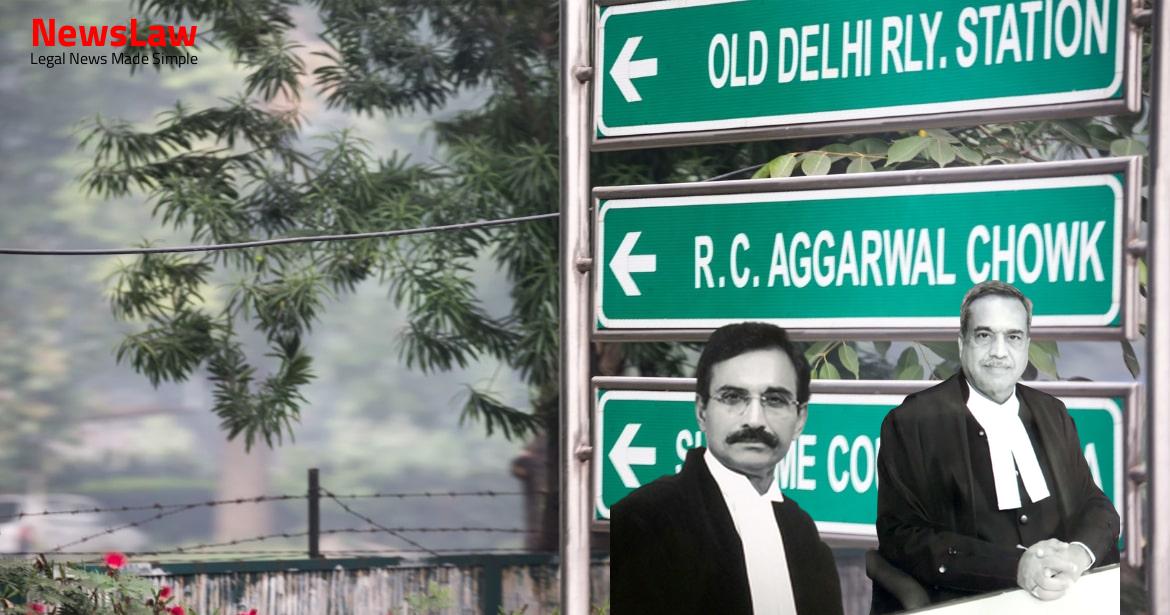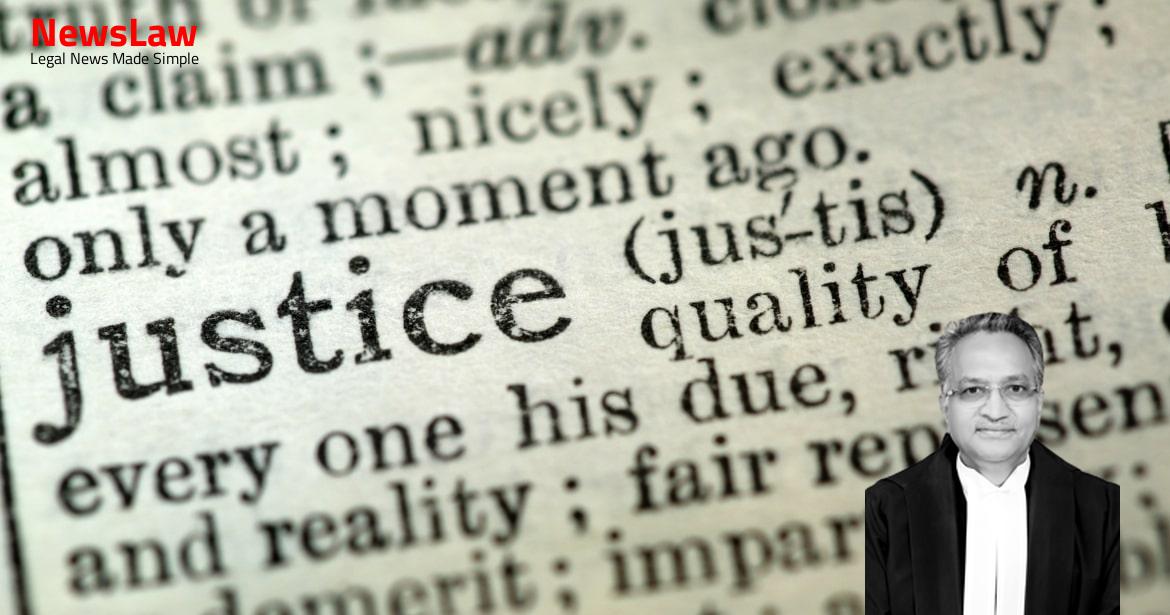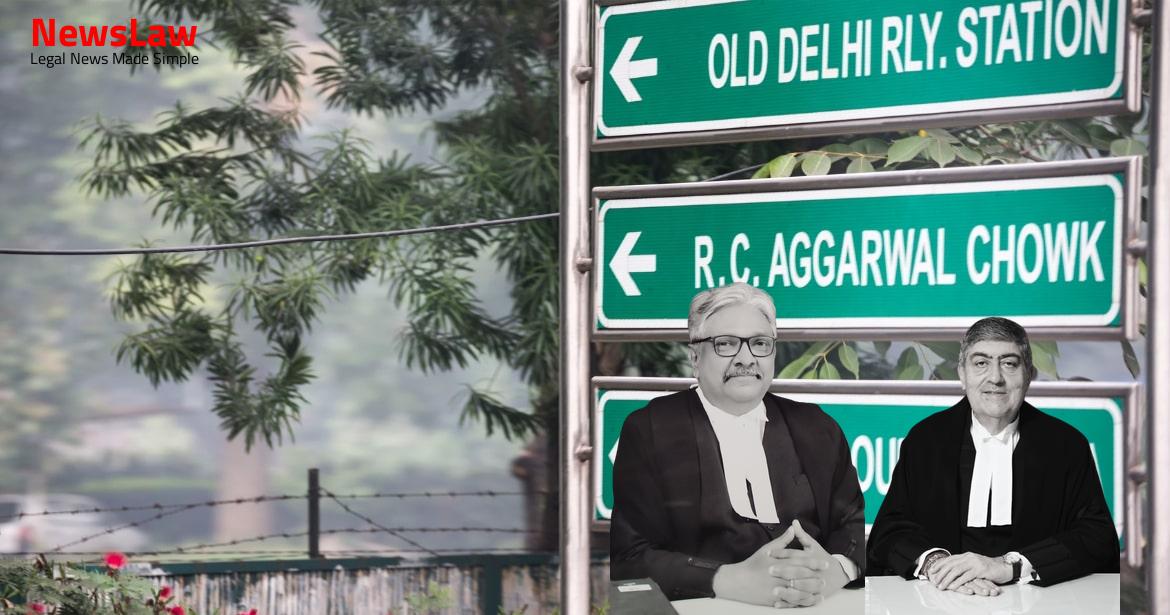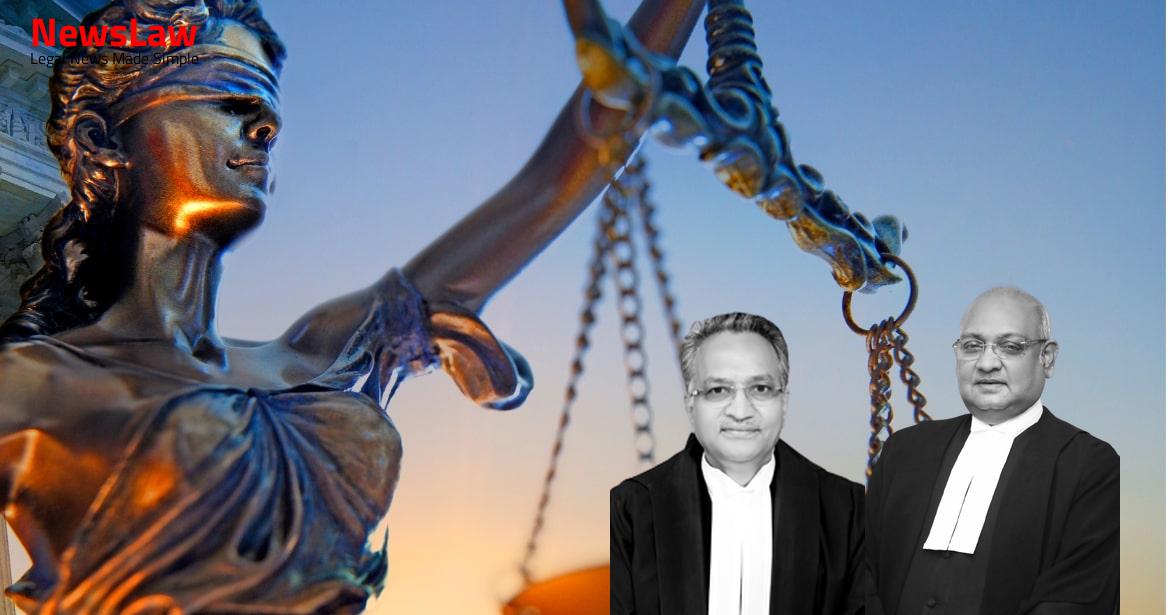In a recent landmark judgment, the Supreme Court of India intervened in the property partition dispute between Sengoda Gounder and Ramasamy. The case involved determining the status of the suit properties as either joint family or self-acquired. The High Court’s ruling was challenged, leading to a significant legal decision with implications for property law. The Supreme Court’s in-depth analysis has clarified the complexities surrounding the blending of ancestral and self-acquired properties.
Facts
- Sengoda Gounder executed two settlement deeds and a will in favor of Subramanian, making him the absolute owner of the suit properties.
- The suit was resisted by Ramasamy, the younger brother of Subramanian, who claimed that the suit properties were joint family properties.
- Ramasamy filed two second appeals before the High Court after the lower courts dismissed the suits.
- Allegations were made that Sengoda Gounder and Ramasamy were colluding to alienate the suit properties.
- The defendant argued that the second suit was barred by Order 2 Rule 2 of CPC.
- The Trial Court found that both the plaintiff and defendant were entitled to half share each in the suit property.
- The appeals by the unsuccessful plaintiff were dismissed by the First Appellate Court.
- The original defendant then filed the present appeals against the decree in favor of the original plaintiff.
- The original plaintiff initially filed a suit for a permanent injunction to restrain the defendant from alienating his share of the properties until final partition.
- The defendant claimed that no joint family ever existed among Sengoda Gounder and his two sons.
- The High Court of Judicature at Madras passed a common Judgment and Order in Second Appeal Nos. 4 and 5 of 2009.
- The High Court allowed the Second Appeals under Section 100 of the CPC.
- The High Court set aside the Judgement and Decree of the Trial court and the First Appellate Court.
- The High Court directed to draw a preliminary decree for partition allotting half share each to the plaintiff and the defendant.
- The High Court ruled that the cause of action for seeking partition is a continuing one.
- The Courts below were found justified in their judgment.
- Order 2 Rule 2 of CPC was not referred to by the Courts below.
Also Read: Address Update Requirement: Legal Implications for Corporate Entities
Issue
- Both the Courts below were not justified in holding that the generosity shown by Sengoda Gounder should not be treated as an act of blending of the suit properties with the ancestral properties.
- The Courts below were not justified in ignoring the factum of describing the properties found in Ex.A1 as ‘Pidhirajyam’ (Ancestral property) and also Exs. A19, 24, 45 and 46 in deciding the lis by holding as though there was no blending or treating the suit property as joint family property.
- The courts below were justified in upholding the execution of Exs. A13 and A14- the settlement deeds and Ex.A24 the Will.
- Sengoda Gounder had no competence to execute the settlement deeds treating the suit property as self-acquired property in its entirety, but his 1/3 share could only be considered as the one relinquished by him in favour of the remaining two coparceners namely, his sons.
- The suit property shall be divided into two shares.
Also Read: Army Discharge Case: Upholding Justice for Long Service Rendered
Arguments
- Shri V. Prabhakar, representing the original plaintiff, argues that the father-Sengoda Gounder’s actions, such as executing settlement deeds and a will, indicate that there was no intention to blend the suit properties with ancestral properties.
- The claim is made that the loan on the land was repaid by Sengoda Gounder from the income of the suit property, thus no blending occurred.
- The High Court recognized the suit properties as self-acquired by Sengoda Gounder and therefore, not ancestral property.
- The High Court’s interference with lower courts’ findings of fact through re-appreciation of evidence is deemed impermissible.
- Shri Siddharth Naidu, on behalf of the defendant, argues that the substantial questions of law framed by the High Court are not substantial at all and mostly pertain to questions of fact.
- The re-appreciation of evidence by the High Court is criticized as beyond its jurisdiction under Section 100 of the CPC.
- The appellant insists that the High Court’s decision to allow the appeals and overturn lower court judgments is erroneous, considering the lack of perversity or inconsistency in the findings.
- The High Court’s assertion of blending the suit properties with ancestral properties is challenged as unsustainable.
- The plaintiff’s counsel defends the High Court’s decision citing cogent reasons for considering Sengoda Gounder’s actions as blending the properties.
- The High Court’s careful approach in the second appeals under Section 100 of the CPC is acknowledged, particularly in reevaluating key evidence like Exhibit A1 and others to conclude on the blending of properties by Sengoda Gounder.
- The High Court is bound to consider and appreciate the evidence on record while discussing substantial questions of law.
- Appreciation of evidence by the High Court in deciding second appeals under section 100 of CPC is permissible.
- The High Court correctly analyzed the Sale Deed dated 05.02.1975 and Sale Deed dated 25.03.1977, concluding a blending of suit properties with ancestral properties by Sengoda Gounder.
- After the blending of properties, Sengoda Gounder lacked the competence to treat suit properties as self-acquired in subsequent settlement deeds or wills.
Also Read: Justice Served: Supreme Court Ruling on CBI Inquiry against Army Officer
Analysis
- The High Court re-appreciated the entire evidence on record, which is impermissible in a Second Appeal.
- The High Court’s reasoning for blending the suit properties with joint family properties based on loans taken by family members is not valid.
- Abandonment of separate rights in the property must be clearly proved.
- Interference with findings of fact is permissible only in specific situations, such as reliance on inadmissible evidence.
- The Second Appeal is maintainable only on substantial questions of law, not on questions of fact.
- It is not permissible for the High Court to re-appreciate evidence when findings by lower Courts are based on evidence.
- The High Court erred in holding that there was blending of suit properties with joint family properties by Sengoda Gounder.
- The suit properties were self-acquired by Sengoda Gounder as per Settlement Deed.
- The High Court’s procedure in deciding the Second Appeals went beyond the scope of its powers under Section 100 of CPC.
- In a second appeal under Section 100 of the CPC, the High Court cannot substitute its own opinion for that of the First Appellate Court unless specific conditions are met.
- The High Court can interfere only if the conclusions of the lower court were contrary to mandatory provisions of the law, contrary to the law as pronounced by the Apex Court, or based on inadmissible evidence or no evidence.
- The First Appellate Court’s decision cannot be challenged if it has exercised discretion judiciously and without error of law or procedure.
- Before reversing the judgment of the first appellate court, the High Court must formulate a substantial question of law as per Section 100 CPC.
- Interference with findings of fact is allowed when material evidence was not considered, which if considered could have led to a different conclusion.
- Both lower courts concluded no blending of suit properties into joint family properties
- High Court reversed findings without proper justification
- High Court should not reverse findings based on evidence on record
Decision
- Both present appeals allowed.
- Impugned common Judgment and Order passed by the High Court in S.A. Nos. 4 and 5 of 2009 is quashed and set aside.
- Common Judgment and Decree passed by the Trial Court dismissing the suits are restored.
- No order as to costs in the present circumstances.
Case Title: S. SUBRAMANIAN Vs. S. RAMASAMY AND ORS
Case Number: C.A. No.-004536-004537 / 2019



